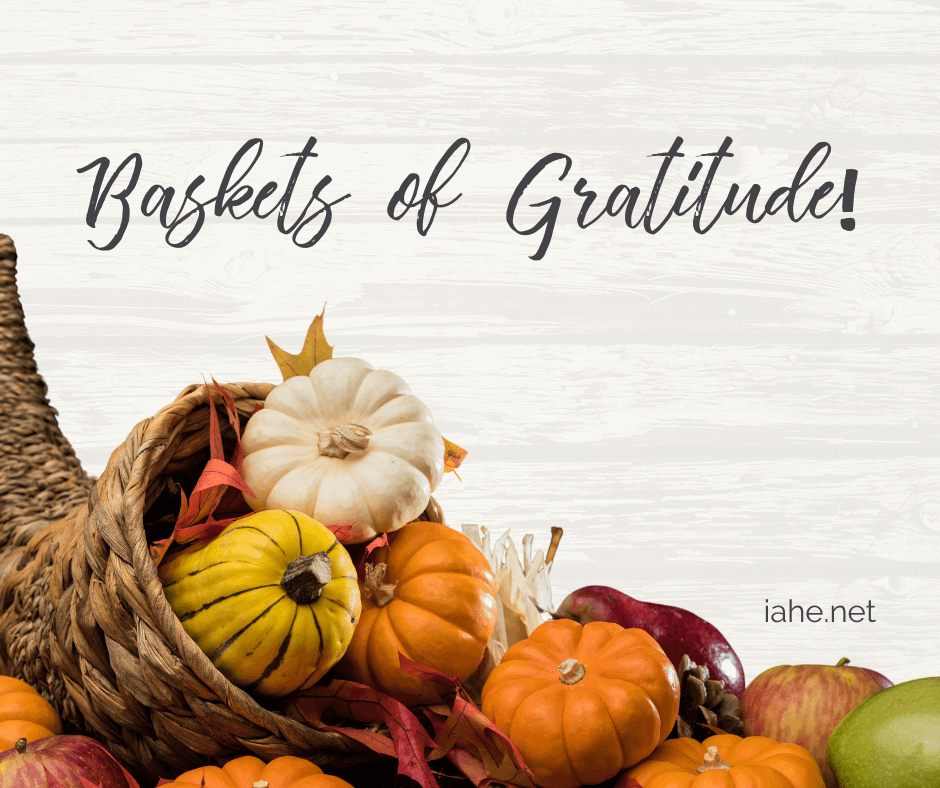
The Thanksgiving season is a time of praise and gratitude for the harvest and blessings brought to our lives. Likewise, we can also celebrate the blessings of our homeschool journey. What a precious and beautiful gift God gave when he called us to homeschool our children! Whether you just started homeschooling today or have been homeschooling for 15+ years, we can all give thanks and praises into the holiday season for the calling that God has placed on our hearts.
What are you most thankful for in your homeschooling journey this season? What is your child or children most grateful for in their education?
Weaving Gratitude
Modeling gratitude for our children can bring peace and positivity to our homeschool. Filling the space with thanks and praises leaves less room for negativity and feelings of emptiness. Showing gratitude together brings families closer and strengthens their relationship with God. There are many opportunities to weave gratitude into our homeschools this season. Here are just a few ideas:
- Provide prompts for writing assignments that encourage why they are thankful for homeschooling or a recent experience they enjoyed, thanks to the freedom of homeschooling.
- Have children write thank you notes not just for holiday gifts but to those at a recent field trip destination that made the experience memorable.
- Take an autumn nature walk and marvel at God’s creation. Then, prompt your children to show gratitude for our Creator by painting or writing what they see, experience, and feel in those moments.
Project-Based Learning – Baskets
Let’s take our gratitude for God’s calling to homeschool a bit further with a project-based experience by making baskets of gratitude. Baskets come in many different sizes and shapes and can serve various purposes. Many cultures, from Israelites to Native Americans, used baskets as household necessities. Still, they differed from culture to culture by how they were constructed, the materials used to create them, and the designs. The way they were designed was unique to the culture and region, and the knowledge of how to construct them was passed down from generation to generation.
With today’s instant gratification with purchases, we forget the work put into a handmade item and the gratitude we feel towards the crafter and the materials that went into the basket. Crafting baskets with our children can be a fun way to bring a conversation of gratitude into our home. Not only can we discuss gratitude for their physical work and the time they put into the basket, but we can also give thanks for the materials God has provided us with to make these baskets. And what a beautiful addition their basket can make at the Thanksgiving table to hold bread or napkins, as a hostess or thank you gift, to bring texture to the decor, or as a blessing basket for a neighbor in need!
At the end of this article, you will find various tutorials on different basket-making projects. I encourage you to find the right fit for your family based on available materials, your children’s ages, and your purpose for the basket. We’ve also included instructions for weaving placemats for the younger children to help decorate the Thanksgiving table.
Finding Your Materials
Baskets can be made from numerous materials. Different cultures and different time periods have utilized various materials for these baskets based on what was available to them. In Israel, during biblical times, common materials included dried palms, straw, reeds, rushes, sedges, and grasses. Jochebed placed Moses in a basket made from reeds to hide him on the Nile River.
Indigenous groups across North America made baskets with various materials based on geography. Sweetgrass was a common material for the Northeast, whereas pine needles and wicker were more common in the Southeast. Northwest tribes often used spruce root and cedar bark, while Southwest tribes used yucca and sumac.
Here are some more common materials you will find in Indiana:
- Corn husks
- Vines
- Prairie grasses
- Willow branches
- Tree barks (poplar, basswood, and paper birch)
- Daylily leaves
- Cattail leaves
- Thin ash and oak splints
Baskets can also be made from various other materials, such as paper, duct tape, recycled magazines, fabric scraps, and pine needles.
Weaving Gratitude into Your Basket
If your family selects materials that can be written on with a pen or a permanent marker, I encourage you to write your praises of thanksgiving on the slips of paper or fabric. If you choose to skip the writing or have materials that do not allow for writing, take the time to show your children how they can pray over the strips of materials and give thanks to God for the abundance he has provided in homeschooling, in life, and in access to the materials to create the basket. If the basket will be used as a gift, pray over the basket for the one receiving the gift.
“O come, let us sing unto the LORD;
Let us make a joyful noise to the rock of our salvation.
Let us come before his presence with thanksgiving,
And make a joyful noise unto him with psalms. ”
Psalm 95:1-5
Links for Basket-Making
- Construction Paper Mats
- How to Weave a Basket
- Weave a Paper Basket
- Duck Tape™ Baskets
- Recycled Magazine Basket Braided Baskets with Fabric Scraps
- Grass Basket Weaving
- Birch Bark Basket
- Willow Basket
Don’t hesitate to search for a tutorial on basket-making with whatever supplies you have on hand!
Additional Activities
For additional Thanksgiving Activities, please download your FREE Thanksgiving Traditions ebook.
